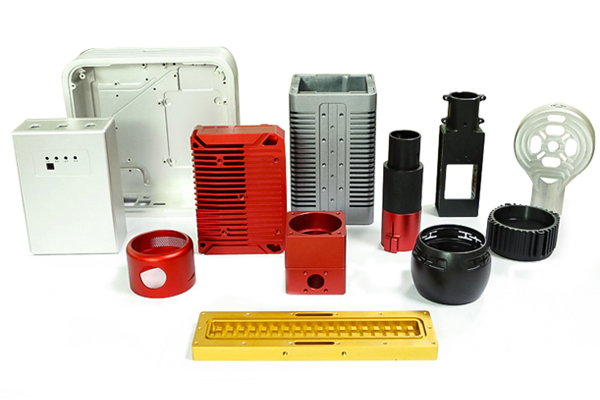15 years one-stop China custom CNC machining parts factory

Hey there I’m VMT Sam!
With 25 years of CNC machining experience we are committed to helping clients overcome 10000 complex part-processing challenges all to contribute to a better life through intelligent manufacturing. Contact us now
 144 |
Published by VMT at Feb 12 2024
144 |
Published by VMT at Feb 12 2024
Addressing the Production Needs of Multiple Variants and Small Batch Parts in CNC Machining
In today's manufacturing environment, the demand for producing multiple variants and small batch parts is on the rise. This type of demand poses challenges for CNC machining factories, including frequent process changes, complex material management, and lower equipment utilization. This article explores effective strategies for dealing with such production requirements, aiming to enhance efficiency, meet delivery schedules, and ensure quality.

I. Characteristics of Multiple Variants and Small Batch Parts Production Needs
Diversity: Multiple product types with relatively low quantities.
Quick Changeovers: Frequent process and equipment adjustments.
Challenges in Material Management: High difficulty in managing a variety of materials.
Low Equipment Utilization: Small batch sizes result in discontinuous equipment usage.

II. Strategies for Addressing These Needs
Process Optimization:
Standardization and modularization: Classify parts with similar processes to reduce process variations and enhance equipment utilization.
Quick changeover techniques: Provide specialized training to minimize setup time and labor, improving efficiency.
Production Planning and Scheduling: Mixed production mode: Schedule similar parts to be produced during the same time period, reducing frequent process changes.
Short-term planning: Adopt short production cycles to adjust based on real-time production and customer demands.
Material Management:
Standardized bill of materials: Reduce material types and quantities, standardizing part structures.
Dynamic inventory management: Adjust inventory based on actual production progress and customer demands, reducing inventory costs.
Equipment and Tool Management:
Flexible equipment modifications: Modify equipment to adapt to various processing needs.
Quick tool change technology: Implement fast tool change methods to minimize downtime.
Digitalization and Intelligent Production:
Industrial Internet of Things (IIoT): Real-time monitoring of equipment and production lines, enabling predictive maintenance.
Intelligent scheduling systems: Optimize production planning and scheduling based on big data and algorithms.
Collaboration and Communication:
Strengthen inter-departmental communication: Ensure information flow between planning, procurement, production, and quality departments.
Close collaboration with customers: Understand customer needs, collaboratively address production issues.
Quality Assurance:
Stringent quality inspection processes: Ensure every part meets quality standards.
Continuous quality improvement: Optimize production processes through feedback collection and data analysis.
Employee Training and Incentives:
Regular training programs: Enhance employee skills and efficiency.
Incentive mechanisms: Encourage employees to actively participate in improvement processes and suggest innovative ideas.
Continuous Improvement and Feedback Mechanism:
Periodic evaluation of production processes: Identify bottlenecks and issues, formulate improvement measures.
Customer feedback: Collect and address customer feedback promptly, continuously optimize product design and production processes.
Advanced CNC Equipment:
Utilize CNC equipment with high flexibility, precision, automation, and intelligence to meet the demands of multiple variants and small batch parts. Improve processing efficiency and reduce manual intervention, ensuring high precision and consistency to guarantee reliable product quality.
Modular Design Approach:
Adopt modular design methods for multiple small batch parts to shorten design cycles, reduce costs, enhance design flexibility, and facilitate production and maintenance. Quick adaptation to different product requirements can be achieved through modular combinations, effectively meeting the production needs of multiple small batch parts.
Enhanced Supply Chain Management:
Foster close collaboration with suppliers to ensure stable and reliable supply of raw materials and components. Optimize and manage the supply chain to reduce procurement costs while ensuring the quality, reliability, and timeliness of materials—a critical aspect for the production of multiple small batch parts, where frequent material changes can lead to production interruptions and quality issues.
Application of Digital Simulation Technology:
Utilize digital simulation technology for simulating and predicting machining processes. By simulating and addressing potential issues before actual production, reliability and efficiency of the machining process can be improved. This is particularly crucial for the production of multiple small batch parts, where the cost of trial production is often high and time-sensitive.
Implementation of Flexible Manufacturing Systems (FMS):
Integrate and automate control between machining equipment using flexible manufacturing systems. Improve equipment utilization and production efficiency by rapidly adapting to different processing needs. FMS allows quick adjustment to different product requirements, reducing manual intervention and errors, and improving the reliability and consistency of the production process, effectively meeting the production needs of multiple small batch parts.
Establishing Reasonable Pricing Strategies:
Develop rational pricing strategies considering the unique characteristics of multiple small batch parts production. Taking into account special production circumstances and cost-addition principles ensures that the price covers manufacturing costs while maintaining competitiveness. Balancing customer needs and economic benefits is crucial.
Establishing Rapid Response Mechanisms:
Establish rapid response mechanisms to address customer demand changes and urgent orders. Adjust production plans and resource allocation promptly, prioritizing the fulfillment of urgent orders. By ensuring a quick response, customer satisfaction can be enhanced while maintaining production stability and efficiency.
In conclusion, addressing the production needs of multiple variants and small batch parts requires a comprehensive consideration of various factors and optimizations. Improvements in process flow, production planning, material management, equipment and tool utilization, digitalization, employee training, collaboration, quality assurance, and continuous improvement are essential. Additionally, utilizing advanced CNC machining equipment, modular design methods, enhanced supply chain management, digital simulation technology, flexible manufacturing systems, reasonable pricing strategies, and rapid response mechanisms are crucial measures to effectively meet the production requirements of multiple small batch parts. By implementing these measures, CNC machining factories can better satisfy the demands of multiple variants and small batch parts, enhance competitiveness, and achieve sustainable development.
Ready To Start Your Next Project?
Get Instant Quote

Request a Free Quote
Send us a message if you have any questions or request a quote. We will get back to you ASAP!